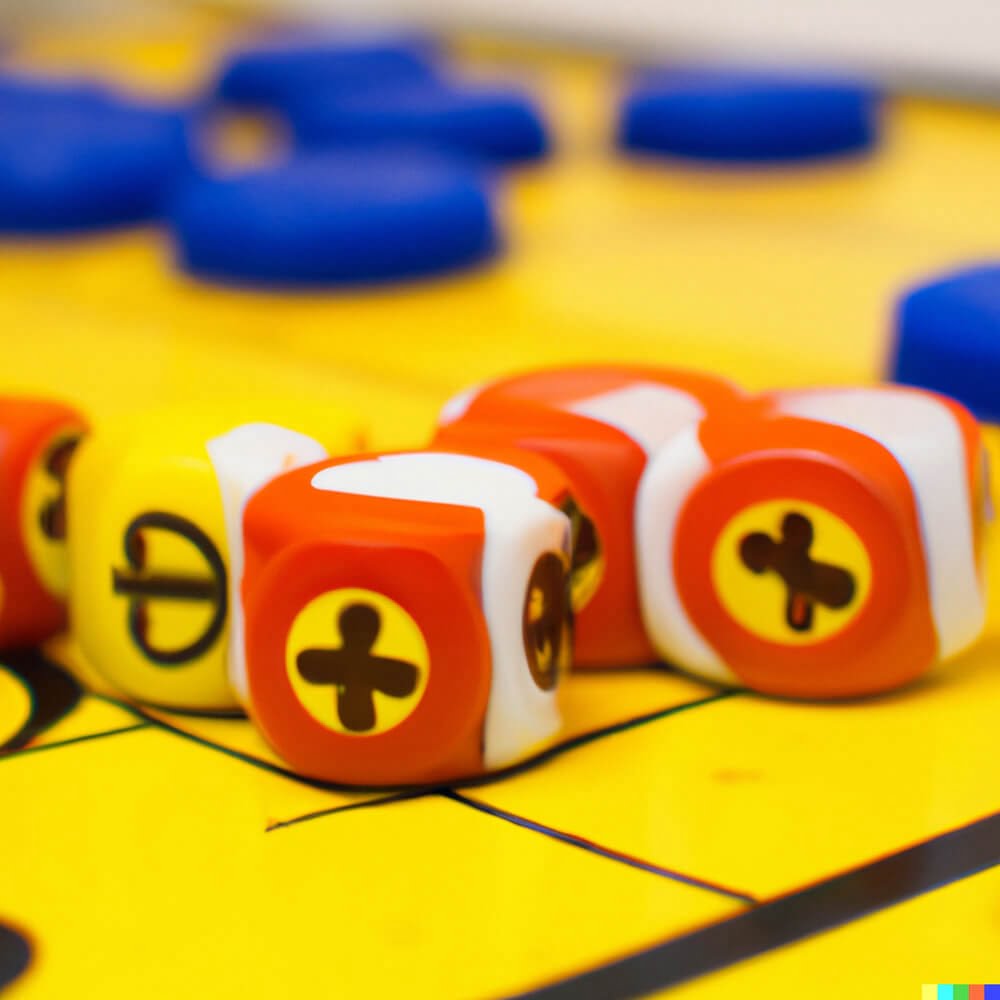Introduction
Scythe is a popular and critically acclaimed board game set in an alternate-history 1920s period. It is a time of farming and war, broken hearts and rusted gears, innovation and valor.
In Scythe, each player represents a character from one of five factions of Eastern Europe who are attempting to earn their fortune and claim their faction’s stake in the land around the mysterious Factory. Players conquer territory, enlist new recruits, reap resources, gain villagers, build structures, and activate monstrous mechs. During each game round, players simultaneously choose actions from the available options to build the foundations for their clans for dominance of Europa.
Players use various resources such as gold coins, iron or wood to pay for upgrades and mobilize troops throughout the game’s map. During each turn on the map board there are several interesting options available depending on your faction including trading resources with others players or recruiting people to your cause. Additionally when playing Scythe you can build a variety of structures such as factories or bridges using your resource pool which will provide unique capabilities that can be used throughout your turn. Lastly you can control powerful mechs which can aid you in battle by improving your strength or at times protecting against enemy forces! Ultimately your goal is to grow stronger than the other factions while still providing advances for all in order to win mechanical mastery of Europa!
A Brief History of the Scythe Board Game
Scythe is a board game designed by Jamey Stegmaier and published in 2016. It is set in an alternate-history version of early 20th-century Eastern Europe during the “industrialization” of the region. Players take on the roles of leaders of several factions attempting to gain control over the land. The goal of each player is to use their faction’s unique combination of resources and abilities, as well as interact with other players, to develop their economy and build up an army capable of controlling their opponents.
The game features a variety of mechanics such as worker placement, area control, and resource gathering all while developing your own nation with an emphasis on deductive reasoning tactics. Every play is different since there are many different paths that can be taken leading to various victory condition scenarios. There are even solo or cooperative gameplay modes available for those wanting a different experience from the traditional one-against-all format offered by most 2-5 player party games.
Scythe has proven to be incredibly popular due it’s complexity and fast pace gameplay style combined with its excellent thematic adaptation into a new culture setting from the 1920s era. As players expand their economy and military threat upon the map they must also focus on diplomacy among other players to avoid war but eventually their growing strength will clash with one another leading to escalating tension between each faction until one can claim total dominance over all others resulting in victory! It has constantly been praised as one of the best modern strategy board games and has even earned numerous awards throughout its life so far including being nominated for best strategy game at the Origins Awards 2017!
The Basic Rules of Scythe Board Game, With Step by Step Instructions
Scythe Board Game is a strategic game set in an alternate-history 1920s Eastern Europe. The basic objective is to increase your wealth and influence more than all the other players by buying resources, building structures, and conquering territories.
Before you can start playing Scythe Board Game, you need to assemble the game board components and set up the board.
1. Assemble the game board by laying out all of the tiles that are included in the box in their proper positions on the game board.
2. Place any resource tokens (wood, stones, etc.) onto their designated spots on the map according to the rule book’s instructions.
3. Put any objectives that are listed on your particular version of Scythe onto either side of the center structure using paper clips or magnets.
4. Divide all of the player pieces among all of the players evenly and place them face-down in a pile near each player’s side of the board.
5. Set up your Faction mat by stacking up all 5 cards at once and placing them in order from top to bottom: one card for each Faction ability, one card for keeping track of money and colored stars, one card for resources (like Wood or Iron), and two cards for building character upgrades such as new Leaders or Structures). Place this mat face down beside you; this is where you’ll place all your character upgrades throughout gameplay.
6. Place five meeples (or tokens) representing workers around each player’s Faction mat according to which player has which color meeple assigned to them (usually black, blue, red, yellow). These represent your workers who will be doing tasks around Eastern Europa during gameplay such as building airstrips or grain silos or harvesting resources like wood or iron ore.
7. Choose a starting player; this should rotate each round of play so that no one person has an advantage over his opponents from sitting first every time!
8 Once everyone has chosen their faction power mats, drawn starting pieces from their respective piles, and placed their workers appropriately around their factions mat on their sides of the game board”you’re ready to start playing! Each turn consists of 2 actions: a Main Action which is any action related to expanding your territory (building mechanized units, taming animals, constructing buildings/bridges), followed by an Upkeep action which involves reaping rewards (collecting resources/money by trading with other players or completing various faction abilities).
Buildings and Structures
Scythe’s board game rules for the building and structure phase involve constructing and upgrading your faction. Each faction has two types of buildings: an home base, which is where you start the game, and other various structures that you can build throughout the game. In order to construct a building or upgrade it in any way, you must use resources (wood/metal/oil). To acquire resources, you can send workers out to gather materials at specific resource nodes located around each player’s home base. After gathering all the required materials needed, your team can construct a new structure or upgrade an existing one.
When building a new structure, it takes time for it to be completed. You can choose to complete an already partially built structure immediately if have enough resources and workers in turn order to do so. The rules for upgrading a partial build are slightly different; if your team does not have enough resources to complete the construction of an upgrade but has at least part of it built/partially-constructed, then they will have to wait until next turn before they can progress with completing the build in full.
You may also choose to demolish structures and reclaim some of these resources instead of upgrading or making further use of them. Once demolition takes place, some resources will be refunded depending on how much construction had already been completed when it was demolished as well as its starting cost in terms of materials used for initial construction.
Resource Management
In Scythe Board Game, resources are key to winning the game. Each player must gather and use resources in a number of ways in order to be successful. The main resource available is coins, which are used to purchase new units and structures, upgrade existing cards, move around the map, trade with other players, and more.
Resources can also be gained through the control of territories around the board. Each territory controlled rewards its owner with either coins or resources such as wood, metal and oil. These are required for various actions throughout gameplay such as building certain structures or recruiting certain characters. They can also be used when trading with other players or investing in unlocking new technologies from cards on the board.
The type of resources gathered largely depends on where a player’s forces are stationed ” if they are located near forests or mountains they will gain more wood or ore respectively ” and it is important that players manage these resources efficiently to ensure victory! As well as gathering resource cards directly from the board and within territories they own, plenty of cards allow players’ factions to earn additional rewards by selling excess cards back onto the market as well as giving them additional bonuses during battle rounds.
Battles and Encounters
In Scythe, battles and encounters are exciting actions that players take against each other in order to increase their control over the game board. When a battle or encounter takes place, each player involved must choose one of their characters on the board as the combatants and roll a battle die to decide the outcome. The possible outcomes are divided into two categories: friendly and hostile.
If both characters end up friendly after a roll, then nothing happens apart from shifts in power and resources along with potential trade offers. However, if one or both characters roll hostile results then they enter into a battle. In this case, the player must move any remaining units of either side away from the conflict zone – oftentimes closer or back to their respective home base – and each ally attempts to claim victory. Victory is achieved when one character reduces the other’s strength score (Life) meter to zero points, meaning they eliminate all competition from that location on the board.
A particularly noteworthy action during these scenarios is retreats. Whenever an individual unit decides it wants to pull out from a dangerous situation, it can designate itself as having retreated at any given moment before its Life Meter reaches zero. This allows them to save some energy for another altercation without consequence or penalty; however, retreating does not prevent players from demanding resources like stars and coins for peace between sides.
Advanced Strategies
One of the advanced strategies in the Scythe board game is to focus on resources. Since some players will be looking to get notoriety or combat victories, it can be easy to get side-tracked from focusing on resources. However, it is important to remember that most points are generated from having certain resources at the end of the game. Therefore, you should place an emphasis on accumulating resources like money and power, as well as upgrading your structures for production capabilities if available on your board.
Another advanced strategy for Scythe is to use combat wisely. Direct attacks are quite costly and will leave you vulnerable afterwards, so make sure to have enough reserves in case an enemy decides to retaliate against you. If possible, try to take advantage of indirect combat such as establishing outposts around an enemy’s area instead of directly attacking them each time to get their attention and cause a diversion away from what you are actually building up! Additionally, when engaging in direct combat with an enemy, make sure to calculate whether or not there is potential for a draw; divvying up resources this way can save both sides a lot of trouble down the line and ensure less animosity between players while still giving your faction more control over its own objectives. Finally, try to create good relationships with allies by trading resources when needed! Trading can help provide mutually beneficial solutions during gameplay and thus open up future possibilities between factions.
Final Thoughts
Scythe is a popular board game for a variety of reasons. The appeal of Scythe lies in its unique game mechanics, captivating world-building, and intricate decision-making system. These carefully crafted components provide a challenging but rewarding experience, creating an engaging environment that players can come back to over and over again.
The first element that sets Scythe apart from other board games is its distinct game mechanics. Players must strategically move their troops, use resources wisely, and expand their territory while competing against their opponents in an effort to gain control of the land. The expansive map and accessible rules give players plenty of freedom within the game ” allowing them to explore different strategies and develop unique approaches for victory. Moreover, each player’s individual objective may differ from one match to the next, providing lots of variety as well as replay value.
In addition to its exciting gameplay, Scythe provides an immersive world-building experience with its detailed characters and complex lore. From the steam-punk visuals to the branching storylines that play out on the board, it’s easy for players to become completely immersed in this alternate 1930s universe during game play. Additionally, Scythe’s multiple levels of strategy require the help of personal strategy cards which contain specific character abilities and bonus actions ” forcing players to think ahead in order to properly plan their moves according to each character’s strengths and weaknesses.
Lastly, Scythe’s intense decision-making system gives players difficult choices throughout each match as they evaluate all aspects of every turn – including production actions, combat tactics, recruitment options, resource gathering opportunities – in order make wise decisions when setting course towards total victory points. Its structure ensures that no two matches are ever the same ” resulting in countless hours of unpredictable fun!

I love playing all kinds of games – from classics like Monopoly to modern favourites like Ticket to Ride.
I created this blog as a way to share my love of board games with others, and provide information on the latest releases and news in the industry.





